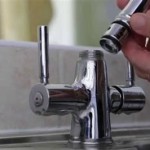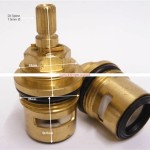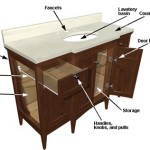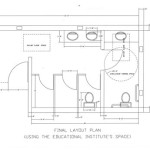White Residue On Bathroom Walls: Essential Aspects
Identifying the part of speech of the keyword "White Residue On Bathroom Walls" (noun) is crucial to understanding its essential aspects. As a noun, it refers to a substance or deposit present on bathroom walls, highlighting its physical characteristics. This article will delve into the essential aspects of white residue on bathroom walls, focusing on its causes, prevention, removal, and the potential underlying issues it may indicate.
Causes of White Residue
Identifying the cause of white residue on bathroom walls is crucial for effective prevention and removal strategies. Common culprits include:
- Hard Water Deposits: Minerals in hard water, such as calcium and magnesium, can precipitate and form white residue when water evaporates.
- Soap Scum: Soap residue, especially from bar soaps, can accumulate on walls and form a white film when combined with hard water minerals.
- Mold and Mildew: In humid bathroom environments, mold and mildew can thrive and produce white or grayish residue on surfaces.
Prevention Techniques
To prevent white residue buildup, consider implementing these measures:
- Regular Cleaning: Regularly wiping down bathroom walls with a cleaner specifically designed for bathroom surfaces can remove soap scum and prevent hard water deposits.
- Ventilation: Proper ventilation in the bathroom helps reduce moisture buildup, which can prevent mold and mildew growth.
- Water Softener: Installing a water softener can reduce the concentration of minerals in hard water, minimizing the formation of white residue.
Removal Methods
Various methods can be used to remove white residue from bathroom walls, depending on its cause:
- White Vinegar Solution: For hard water deposits, a solution of equal parts white vinegar and water can be applied to the residue and left for several minutes before scrubbing.
- Commercial Cleaners: Bathroom cleaning products designed to remove soap scum and hard water deposits are readily available.
- Bleach Solution: In cases of mold or mildew, a bleach solution (1 part bleach to 10 parts water) can be applied to the affected area and left for a short duration.
Underlying Issues
Persistent white residue on bathroom walls may indicate underlying issues beyond surface buildup. These can include:
- Plumbing Leaks: If the residue appears around pipes or fixtures, it may indicate a leak that needs attention.
- Poor Ventilation: Excessive humidity in the bathroom can contribute to mold and mildew growth, leading to white residue.
- Structural Damage: In rare cases, white residue could be a symptom of structural damage, such as water penetration or mold infiltration.
In such cases, it is advisable to consult with a professional plumber or contractor to address the underlying issue and prevent further damage.

White Mold Growth In Your Home Causes Solutions Environix

That White Chalky Build Up In Your Shower Is Efflorescence Read How It Was Removed With A Tile Cleaning Waban Ma

That White Chalky Build Up In Your Shower Is Efflorescence Read How It Was Removed With A Tile Cleaning Waban Ma

What Is The White Stuff On My Marble Shower Pan Appleby Cleaning

Sticky Humidity On Bathroom Walls Hometalk

Advice On Cleaning Black Bathroom Tiles That Have White Residue Tiling Forum Tilers

Understanding White Mold Types Causes Prevention Treatment
Cleaner Left White On Tile Shower Floor Ceramic Advice Forums John Bridge

White Mold Growth In Your Home Causes Solutions Environix

Understanding Efflorescence Aka That Ugly White Powder On Your Tile
Related Posts







